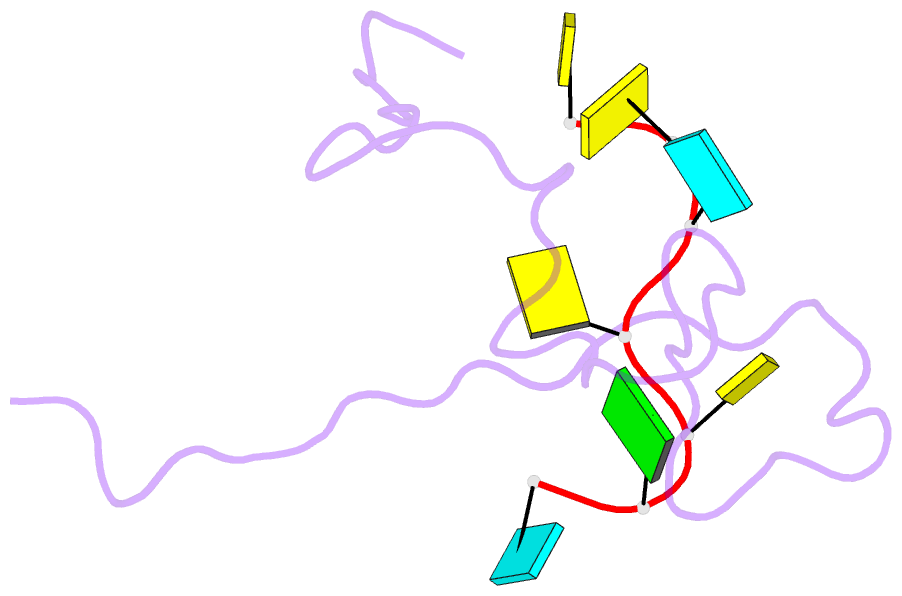Summary information and primary citation
- PDB-id
- 1wwf; SNAP-derived features in text and JSON formats;
DNAproDB
- Class
- viral protein-RNA
- Method
- NMR
- Summary
- NMR structure determined for mlv nc complex with RNA sequence ccuccgu
- Reference
- Dey A, York D, Smalls-Mantey A, Summers MF (2005): "Composition and sequence-dependent binding of RNA to the nucleocapsid protein of Moloney murine leukemia virus(,)." Biochemistry, 44, 3735-3744. doi: 10.1021/bi047639q.
- Abstract
- All retroviruses package two copies of their genomes during virus assembly, both of which are required for strand transfer-mediated recombination during reverse transcription. Genome packaging is mediated by interactions between the nucleocapsid (NC) domains of assembling Gag polyproteins and an RNA packaging signal, located near the 5' end of the genome, called Psi. We recently discovered that the NC protein of the Moloney murine leukemia virus (MLV) can bind with high affinity to conserved UCUG elements within the MLV packaging signal [D'Souza, V., and Summers, M. F. (2004) Nature 431, 586-590]. Selective binding to dimeric RNA is regulated by a conformational RNA switch, in which the UCUG elements are sequestered by base pairing in the monomeric RNA and do not bind NC, but become exposed for NC binding upon dimerization. Dimerization-dependent structural changes occur in other regions of the Psi-site, exposing guanosine-containing segments that might also bind NC. Here we demonstrate that short RNAs containing three such sequences, ACAG, UUUG, and UCCG, can bind NC with significant affinity (K(d) = 94-315 nM). Titration experiments with oligoribonucleotides of varying lengths and compositions, combined with NMR-based structural studies, reveal that binding is strictly dependent on the presence of an unpaired guanosine, and that relative binding affinities can vary by more than 1 order of magnitude depending on the nature of the three upstream nucleotides. Binding is enhanced in short RNAs containing terminal phosphates, indicating that electrostatic interactions contribute significantly to binding. Our findings extend a previously published model for genome recognition, in which the NC domains of assembling Gag molecules interact with multiple X(i-3)-X(i-2)-X(i-1)-G(i) elements (X is a variable nucleotide) that appear to be preferentially exposed in the dimeric RNA.





